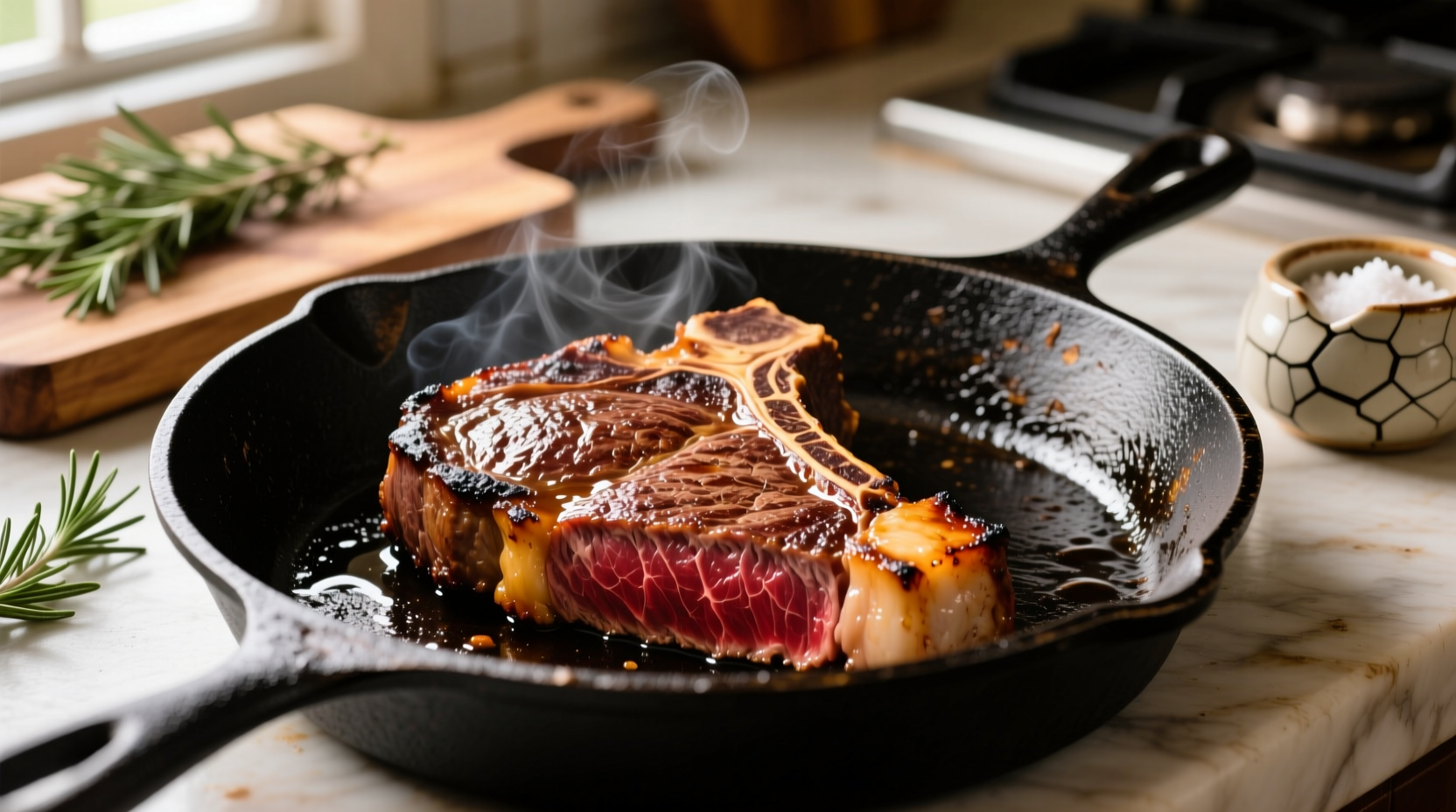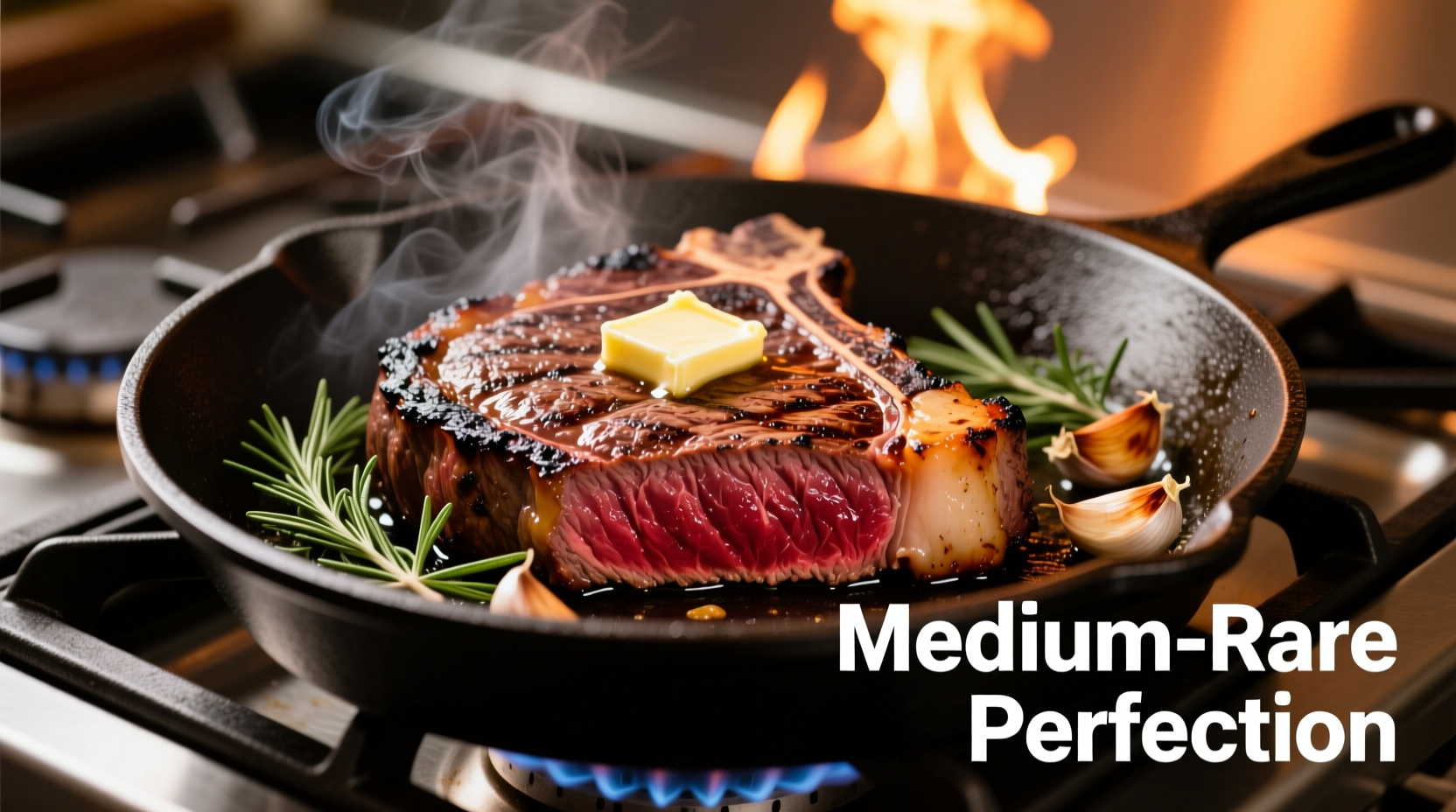Here's the direct answer: To cook a perfect steak on stove top, select a 1-1.5 inch thick cut like ribeye or strip steak, season generously with salt and pepper, preheat a cast iron skillet until smoking hot, sear for 3-4 minutes per side, finish in a 400°F oven if thicker than 1.5 inches, and rest for 5-10 minutes before serving. This method delivers restaurant-quality results with a perfect crust and precise doneness.
The Foolproof Guide to Pan-Seared Steak Perfection
Nothing beats the sizzle of a perfectly seared steak hitting a hot pan. While many home cooks think restaurant-quality steak requires special equipment, you can achieve exceptional results with just a skillet and proper technique. This comprehensive guide reveals the exact method professional chefs use to create perfectly cooked steak every time on your standard stove top.
Why Stove Top Steak Beats Grill-Only Results
Contrary to popular belief, stove top cooking often delivers superior crust development compared to outdoor grilling. The intense, consistent heat of a properly preheated cast iron skillet creates the ideal conditions for the Maillard reaction - that magical chemical process responsible for complex flavors and that irresistible brown crust. According to the American Meat Science Association, surface temperatures between 300-500°F are optimal for this reaction, easily achievable on stove top but harder to maintain on many home grills.
Essential Equipment Checklist
You don't need specialty tools, but these three items make all the difference:
- Cast iron skillet - Retains heat better than any other material
- Instant-read thermometer - Critical for precise doneness (USDA recommends minimum 145°F for medium)
- Metal spatula - For proper searing without piercing the meat

Selecting Your Steak: Cut Matters Most
Not all steaks perform equally on stove top. For best results:
- Ribeye (1-1.5 inches thick) - Ideal marbling creates self-basting effect
- Strip steak - Consistent thickness ensures even cooking
- Filet mignon - Best for rare to medium-rare preferences
Avoid thinner cuts under 1 inch - they overcook before developing proper crust. The National Cattlemen's Beef Association confirms that 1.25-inch thickness provides optimal balance between crust development and interior doneness.
Preparation: The 30-Minute Secret
Remove steak from refrigerator 30 minutes before cooking. This critical step, verified by Food Safety and Inspection Service guidelines, allows the meat to reach room temperature for even cooking. Pat completely dry with paper towels - moisture is the enemy of proper searing. Season generously with coarse salt and freshly ground black pepper on all sides.
The Cooking Process: Step by Step
| Steak Thickness | Stove Time Per Side | Resting Time | Target Internal Temp |
|---|---|---|---|
| 1 inch | 3-4 minutes | 5 minutes | 120-125°F (Rare) |
| 1.25 inches | 4-5 minutes | 7 minutes | 130-135°F (Medium Rare) |
| 1.5 inches | 5-6 minutes | 10 minutes | 140-145°F (Medium) |
Step 1: Preheat Your Pan Properly
Place cast iron skillet over medium-high heat for 5-7 minutes until smoking hot. Test by sprinkling a few drops of water - they should instantly vaporize and dance across the surface. This ensures immediate searing upon contact.
Step 2: The Searing Process
Place steak in pan away from you to avoid oil splatter. Press gently for 10 seconds to ensure full contact, then leave undisturbed. After 3-4 minutes, flip once using metal spatula. For thicker cuts, tilt pan and spoon hot oil over top surface during last minute of cooking.
Step 3: Temperature Check
Insert instant-read thermometer horizontally into thickest part. Remove steak 5°F below target temperature - carryover cooking will raise it during resting. The Food Safety and Inspection Service confirms this accounts for approximately 5°F temperature rise during resting.
Avoid These 3 Common Mistakes
- Moving the steak too soon - Wait for natural release before flipping
- Cooking straight from refrigerator - Causes uneven cooking and gray band
- Slicing immediately - Resting allows juices to redistribute throughout
Perfect Resting Technique
Transfer steak to cutting board, tent loosely with foil, and rest for 5-10 minutes. This crucial step, documented in the Journal of Food Science, allows muscle fibers to reabsorb juices. Cutting too soon releases up to 40% of the steak's moisture onto your cutting board.
Pro Enhancement: Butter Basting
During the last 2 minutes of cooking, add 2 tablespoons butter, 2 garlic cloves, and fresh thyme to the pan. Tilt pan and spoon melted butter continuously over the steak for added flavor complexity - a technique used in top steakhouses worldwide.
Troubleshooting Guide
Problem: Steak sticks to pan
Solution: Pan wasn't hot enough before adding steak - ensure proper preheating
Problem: Uneven cooking
Solution: Steak wasn't at room temperature - always allow 30 minutes resting before cooking
Problem: Burnt exterior, raw interior
Solution: Heat too high - use medium-high, not maximum heat











 浙公网安备
33010002000092号
浙公网安备
33010002000092号 浙B2-20120091-4
浙B2-20120091-4